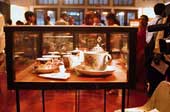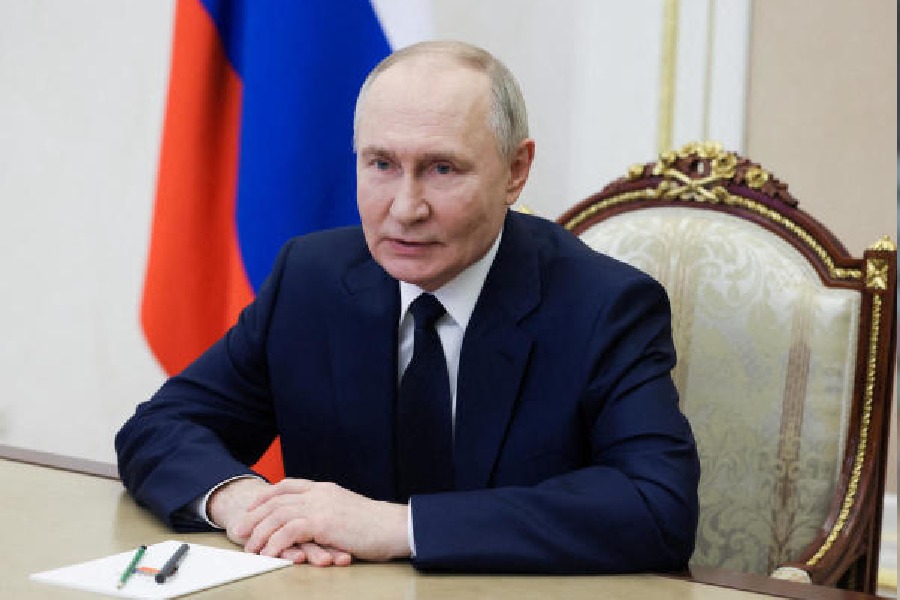 |
| CUPPA CHEER: Teaware on display at the exhibition. Picture by Amit Datta |
Be it hurried gulps from steaming kulhars or leisurely sips from Cha Bar crystals, tea is an anytime, anywhere drink. Yet, there was a time when tea producers had to plead with people to give it a try.
An ongoing exhibition, sponsored by The Tea Board of India, at Gaganendra Pradarshashala, traces the history of tea promotion in India and the changing attitudes to tea-drinking ? from imperial product to national drink.
On view is the reproduction of an array of famous campaigns (on billboard and print), calendars, cartoons, posters, photographs, cinema lobby cards, illustrations, etc. The selection is gleaned from the Hiteshranjan Sanyal Memorial Archive, Centre for Studies in Social Sciences, Visva-Bharati, National Library, ABP Pvt Ltd and other collections.
Here one finds the earliest calendars of Lipton, then the Queen?s Own Tea, which projects the beverage as something directly linked with the grandeur and stateliness of the Empire. In the 1880s, when tea from Assam and North Bengal had become a common man?s drink in England, in India it was still something indulged in occasionally by the English administrators and their Anglicised associates.
In 1901, the Indian Tea Association even distributed ?pice packets? to grow the market among the masses. But growing animosity with the British and tales of atrocities on plantation workers gave rise to the myth about the ill-effects of tea.
From scientist and swadeshi entrepreneur Prafulla Chandra Roy?s derogatory caricature of the ?pakka cha-khor? to artist Annada Munshi?s charkha-incorporated design claiming ?Tea is 100% Swadeshi? was a long step.
The popularity of tea seems directly proportional to its acceptance as a drink for all classes and communities, and then emerging as a national symbol. The links of tea and adda, tea and the family were exploited still later on. The show gives glimpses of the changing trends in printing, art and advertising and brings to the fore many rarely-seen works.
Supplementing these is a collection of antique teaware from China, England, Japan, Sri Lanka and India. A lavishly illustrated monograph by Gautam Bhadra released on the occasion is a not-to-be-missed collector?s item.
If some viewers complained that the exhibition could have been more elaborate and inclusive, Rupali Datta, director of tea promotion, Tea Board of India, explained: ?This is an effort at generating awareness about the origin and heritage of tea in India. And this is just a trial run.?











